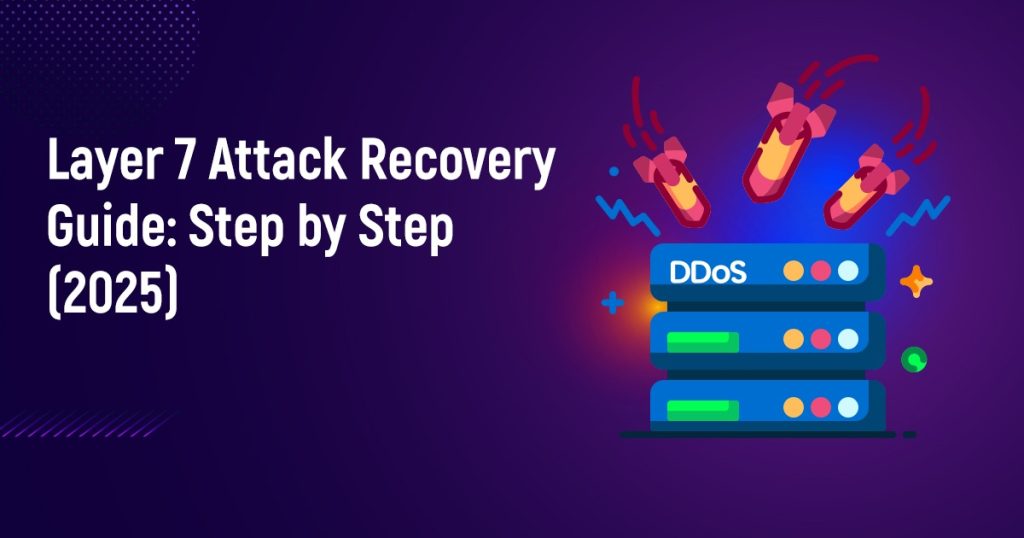How Do Attackers Bypass a CDN?
- 6.3k Views
- 7 min. read
Introduction
Content delivery networks (CDN) have become foundational to modern network architecture, providing performance improvement and security features to publicly turned applications. By caching static assets on edge sites and applying web application firewalls (WAF), rate limiting, and IP filtering, CDNs can dramatically reduce the exposure of backend infrastructure to common threats.
While CDNs are powerful tools, however, they are not foolproof. Attackers continue to identify and exploit weaknesses in CDN configurations and implementations. This article examines how attackers bypass CDN protection, the motivations behind such an effort, and the implications for web application security.
Why Do Attackers Bypass a CDN?
CDNs act as intermediaries between users and origin servers, protecting backend systems from direct exposure. Attackers bypass CDNs to:
-
Exploit weaknesses in the origin server without detection by the CDN’s WAF or logging systems.
-
Avoid CDN security controls such as authentication, rate limiting, and filtering.
-
Fingerprint or scan origin servers, recognizing exposed endpoints or services.
Understanding how a CDN protects against DDoS attack mechanisms and other common threats emphasizes the importance of these evasive techniques.
Core CDN Bypass Techniques
Let’s look at some of the important techniques that attackers use to bypass CDN:
1. Direct-to-Origin Attacks
In a direct-to-origin attack, the attacker recognizes the IP address of the origin server and sends requests directly, bypassing all CDN protections.
The Conditions for Success are:
-
The origin server is publicly accessible.
-
The CDN is dependent on IP allow-listing from known CDN IP ranges.
When these conditions are met, attackers can use tools such as CDN scanners to identify answers that are different when accessing directly against the CDN. These deviations can reveal configuration weaknesses.
Direct-to-origin attacks often succeed due to publicly exposed IPs and insufficient origin cloaking.
2. Alternate Domain Routing via Shared CDN IPs
Because CDNs operate on OSI Layer 7 and share IP addresses among customers, an attacker can create a malicious CDN configuration to route traffic to a victim’s origin.
This reflects the intended route without enforcing the victim’s security policy. This technique is particularly dangerous in shared environments, where rate limiting can only apply to the original customer’s account.
Shared infrastructure increases the risk when verification of origin is missing.
3. HTTP Host Header Injection
When Origin servers use the host header for routing or authentication, an attacker can manipulate it to bypass access checks.
For example, if an origin server allows access based on a specific host value, attackers can request with a forged header to mislead the backend.
Host-header abuse can reveal APIs and endpoints that are otherwise protected by CDN routing.
Techniques for Discovering Origin IPs
Attackers must recognize the origin server’s IP address to bypass a CDN. Common methods include:
-
DNS history lookups: Tools like DNSDumpster and SecurityTrails expose historical DNS records.
-
TLS certificate transparency logs: Certificate data may contain origin IP addresses.
-
Web analytics and third-party scripts: Misconfigured assets or tracking tools may inadvertently leak the origin IP.
This is especially important when understanding what SSL/TLS is in a CDN, as certificates can point to the origin infrastructure.
Attackers can use advanced scanners that automate this process, validating IPs through passive data and active probing. Information leakage from DNS, certificates, and scripts can reveal safeguarded infrastructure.
Advanced CDN Bypass Capabilities
Let’s take a look at some of the advanced CDN bypass techniques:
1. Origin IP Spoofing Using X-Forwarded-For
When the origin server relies on headers like X-Forwarded-For to recognize the client’s IP, attackers can spoof these headers to mimic reliable IPs. If the CDN does not overpower these headers or validate them, attackers can gain unauthorized access.
CDN cache poisoning is another risk: when response variations based on manipulated headers are cached, they may be served to legitimate users.
Takeaway: Trust headers only from authenticated CDN nodes and avoid caching unvalidated responses.
2. Real-Time Origin Scanning
Tools like CDN-Proxy and CDN-Scanner automate origin IP discovery. They rotate domain headers and examine shared infrastructure to catch improperly secured servers. These tools benefit from CDN setups that depend solely on IP-based security.
Takeaway: Attackers exploit a lack of active real-time CDN monitoring and weak validation during discovery scans.
Common CDN Misconfigurations Leading to Vulnerabilities
Even well-configured CDNs become weak through common mistakes, including:
-
Publicly exposed origin IPs.
-
Insufficient IP regulations at the firewall or CDN level.
-
Lack of authenticated origin pulls or mutual TLS.
-
Overdependence on default CDN security features.
Case studies show that nearly 30% of high-traffic websites have at least one DNS or TLS-related exposure that can be manipulated to find origin IPs.
Misconfigurations—not CDN defects—are often the true root cause of bypasses.
Strategies to Prevent CDN Bypassing
Organizations can significantly reduce bypass risks by applying layered defenses:
-
Authenticated origin pulls: Use mutual TLS to ensure only CDN nodes can access the origin.
-
Custom headers for origin validation: Require a secret CDN header, verified by the backend.
-
WAF on the origin: Do not rely solely on edge protection.
-
Private networks or VPN: Hide origin servers behind private routing.
Broader Implications and Evolving CDN Threats
CDN security is a continuously evolving field. Although bypass techniques might be technically challenging, most take advantage of predictable gaps in configuration. And as edge computing becomes more prevalent, it increases the CDN attack surface.
A grasp of how CDNs leverage edge computing also aids in situating where risks can occur outside of the origin-level structure.
In addition, misconceptions like the idea that CDNs automatically block all malicious traffic can create unaddressed security gaps. For example, even when there is protection at the edge, there are times when attackers can evade these defenses through alternative routing methodologies.
Understanding modern threats requires holistic visibility across edge and origin systems.
Gaps in CDN Defense Strategies
So, how do attackers get around a CDN? By taking advantage of predictable misconfigurations, shared infrastructure models, and origin-level vulnerabilities. Although CDNs offer good baseline security and performance, only well-integrated setups can completely leverage their benefits.
Summary:
-
Keep origin IPs private using DNS and firewall controls.
-
Enforce mutual TLS for authenticated pulls.
-
Use secret headers to validate CDN requests.
-
Monitor traffic patterns for anomaly detection.
-
Apply WAF rules both at the edge and origin.
CDNs are more secure only when utilized with accuracy. Misconfiguration—not the model of the CDN—is the frequent cause of successful bypasses.
Additional Considerations About CDNs
CDNs are more secure only when utilized with accuracy. Misconfiguration—not the model of the CDN—is the frequent cause of successful bypasses.
-
Why do websites use CDNs? To minimize latency, make websites load faster, and make sites more available.
-
Can a CDN be hacked? Although unlikely, poor configuration or integration can bring risks.
-
What is a Multi-CDN strategy? Sending traffic across providers for redundancy, but it makes origin protections harder.
-
How does a CDN work? By storing content in edge locations near users.
-
What happens if a CDN fails? The origin could get exposed, or services can go down.
-
How do CDNs stop bots? With behavior-based filtering, challenge-response testing, and IP reputation.
Prophaze CDN Defense Against Bypass Techniques
Prophaze CDN delivers next-generation protection by addressing fundamental vulnerabilities exploited in CDN bypass attacks. Unlike legacy IP allow-listing exposed by shared infrastructure, Prophaze uses container-based security and origin cloaking to neutralize direct-to-origin attacks.
Its built-in WAF inspects traffic at the edge, enforcing security policies before reaching backend servers and minimizing the attack surface. AI-driven real-time analytics detect and block suspicious patterns like cache poisoning and spoofed headers.
Prophaze’s architecture represents a proactive defense model that deactivates common CDN evasion techniques without sacrificing performance or scalability.
Recent Blog Post
Layer 7 Attack Recovery Guide: Step by Step (2025)
September 23, 2025
Top 12 Features Every MSSP Needs in a WAAP Platform (2025 Guide)
September 10, 2025
Top 8 Cybersecurity Challenges Indian Enterprises Face in 2025
September 10, 2025
Best Tools to Identify Broken Access Control in APIs
August 25, 2025







